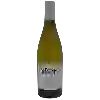
Domaine Las CazottesLes Hauts de Vernet Côtes du Roussillon Villages
In the mouth this red wine is a powerful with a nice balance between acidity and tannins.
This wine generally goes well with beef, veal or pasta.
The Les Hauts de Vernet Côtes du Roussillon Villages of the Domaine Las Cazottes is in the top 10 of wines of Côtes du Roussillon Villages.
Taste structure of the Les Hauts de Vernet Côtes du Roussillon Villages from the Domaine Las Cazottes
Light | Bold | |
Smooth | Tannic | |
Dry | Sweet | |
Soft | Acidic |
In the mouth the Les Hauts de Vernet Côtes du Roussillon Villages of Domaine Las Cazottes in the region of Languedoc-Roussillon is a powerful with a nice balance between acidity and tannins.
Wine flavors and olphactive analysis
On the nose the Les Hauts de Vernet Côtes du Roussillon Villages of Domaine Las Cazottes in the region of Languedoc-Roussillon often reveals types of flavors of oaky, licorice or cassis and sometimes also flavors of oak, spices or black fruit.
Food and wine pairings with Les Hauts de Vernet Côtes du Roussillon Villages
Pairings that work perfectly with Les Hauts de Vernet Côtes du Roussillon Villages
Original food and wine pairings with Les Hauts de Vernet Côtes du Roussillon Villages
The Les Hauts de Vernet Côtes du Roussillon Villages of Domaine Las Cazottes matches generally quite well with dishes of beef, pasta or veal such as recipes of venison stew with red wine, pasta with shrimp or lisbon veal sauté.
Details and technical informations about Domaine Las Cazottes's Les Hauts de Vernet Côtes du Roussillon Villages.
Discover the grape variety: Mourvèdre
Mourvèdre noir is a grape variety originating from Spain. It produces a variety of grape specially used for wine making. It is rare to find this grape to eat on our tables. This variety of grape is characterized by medium to large bunches, and grapes of medium size. Mourvèdre noir can be found in several vineyards: South-West, Cognac, Bordeaux, Provence & Corsica, Rhône valley, Languedoc & Roussillon, Loire valley, Savoie & Bugey, Beaujolais.
Last vintages of this wine
The best vintages of Les Hauts de Vernet Côtes du Roussillon Villages from Domaine Las Cazottes are 2015, 2014
Informations about the Domaine Las Cazottes
The Domaine Las Cazottes is one of of the world's greatest estates. It offers 1 wines for sale in the of Côtes du Roussillon Villages to come and discover on site or to buy online.
The wine region of Côtes du Roussillon Villages
The wine region of Côtes du Roussillon Villages is located in the region of Côtes du Roussillon of Languedoc-Roussillon of France. Wineries and vineyards like the Domaine du Clos des Fées or the Domaine de Rombeau produce mainly wines red, white and pink. The most planted grape varieties in the region of Côtes du Roussillon Villages are Mourvèdre, Lledoner pelut and Pinot noir, they are then used in wines in blends or as a single variety. On the nose of Côtes du Roussillon Villages often reveals types of flavors of cherry, anise or black plum and sometimes also flavors of citrus fruit, tree fruit or fennel.
The wine region of Languedoc-Roussillon
Languedoc (formerly Coteaux du Languedoc) is a key appellation used in the Languedoc-Roussillon wine region of southern France. It covers Dry table wines of all three colors (red, white and rosé) from the entire region, but leaves Sweet and Sparkling wines to other more specialized appellations. About 75% of all Languedoc wines are red, with the remaining 25% split roughly down the middle between whites and rosés. The appellation covers most of the Languedoc region and almost a third of all the vineyards in France.
The word of the wine: Presses
The juice that results from pressing the grapes after fermentation. At the end of the maceration, the vats are emptied, the first juice obtained is called the free-run wine and the marc remaining at the bottom of the vat is then pressed to give the press wine. We say more quickly "the presses". Their quality varies according to the vintage and the maceration. A too vigorous extraction releases the tannins of pips and the wine of press can then prove to be very astringent. Often the winemaker raises it separately, deciding later whether or not to incorporate it totally or partially into the grand vin.









